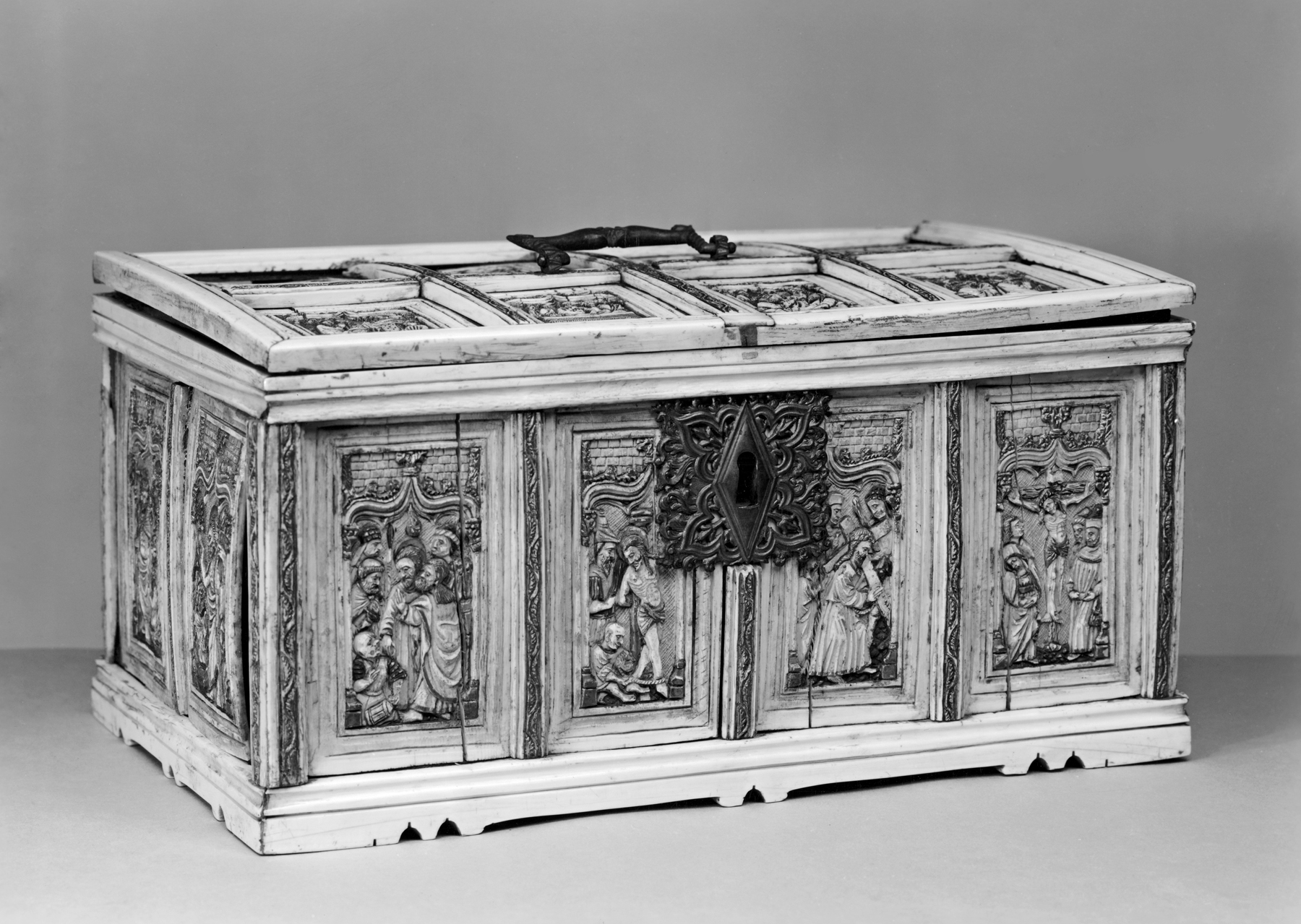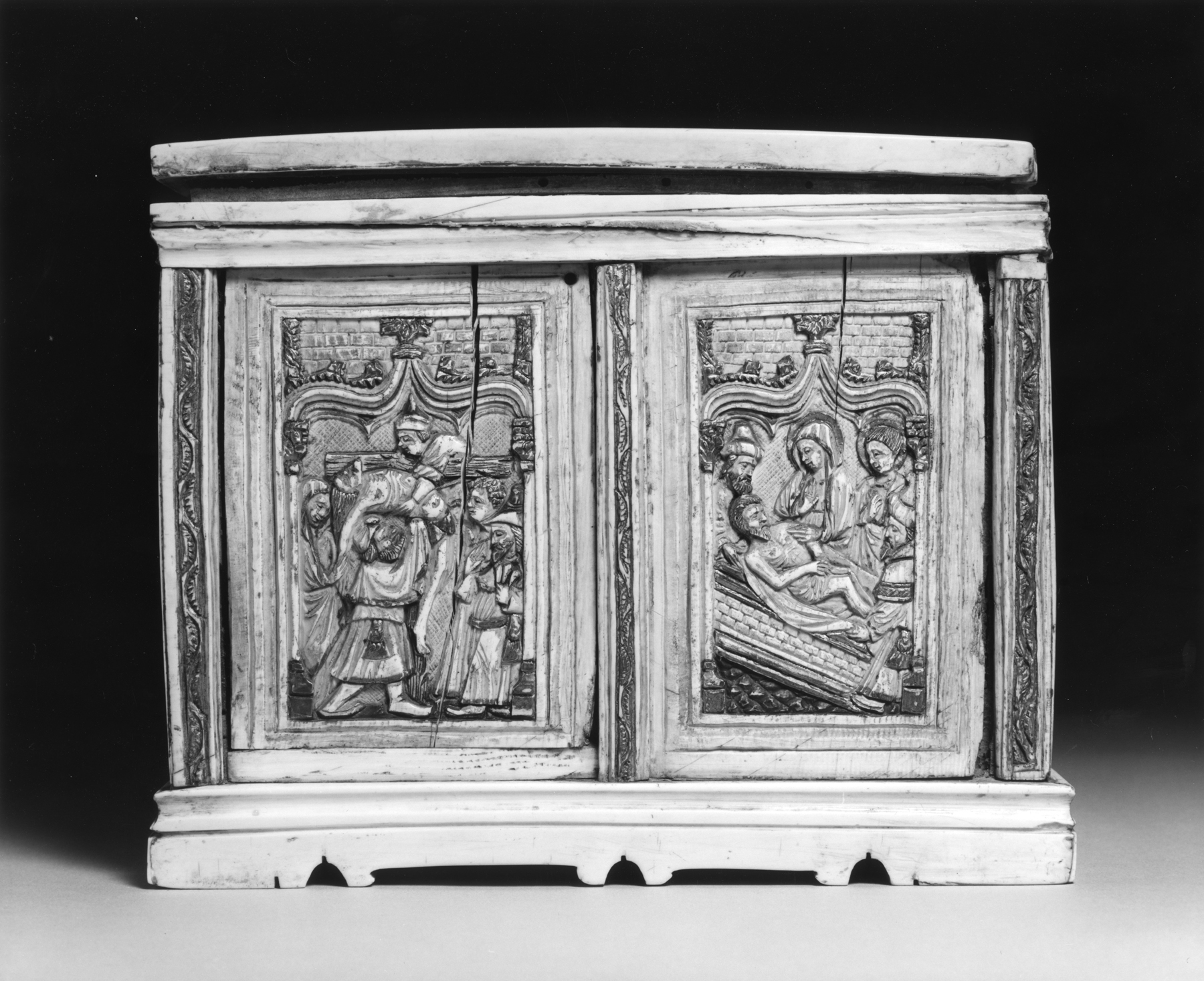Casket with Scenes from the Passion of Christ
Rectangular boxes or caskets of ivory, wood, or leather, decorated with scenes depicting either the Passion of Christ or the Life of the Virgin, were produced in great quantity in 15th-century Flanders and exported all over Europe. The craftsman who carved these images drew inspiration from contemporary woodcuts, particularly the Biblia Pauperum (Bible of the Poor), a pictorial Bible for the illiterate first produced around 1430. This example depicts Christ's Passion. The scenes of Christ's Arrest, Carrying of the Cross, Entombment, Harrowing of Hell, Resurrection, and Appearance to Mary Magdalene have all been taken from this source.
The carved panels retain much of their original paint and gilding. The lock plate on top is a 17th-century addition.
Provenance
Provenance (from the French provenir, 'to come from/forth') is the chronology of the ownership, custody, or location of a historical object. Learn more about provenance at the Walters.
Count Girolamo Possenti, Fabriano. Sale, Raphael Dura, Florence, April 1 1880, no. 38; F. Ongania, Venice. Purchased by Henry Walters, Baltimore; by bequest to Walters Art Museum, 1931.
Conservation
| Date | Description | Narrative |
|---|---|---|
| 11/6/1963 | Examination | examined for condition |
| 6/10/1982 | Treatment | other |
Geographies
Flanders (Place of Origin)
Measurements
H: 6 5/16 x W: 12 3/8 x D: 7 5/8 in. (16.1 x 31.5 x 19.4 cm)
Credit Line
Acquired by Henry Walters
Location in Museum
Not on view
Accession Number
In libraries, galleries, museums, and archives, an accession number is a unique identifier assigned to each object in the collection.
In libraries, galleries, museums, and archives, an accession number is a unique identifier assigned to each object in the collection.
71.251






